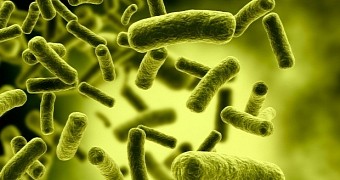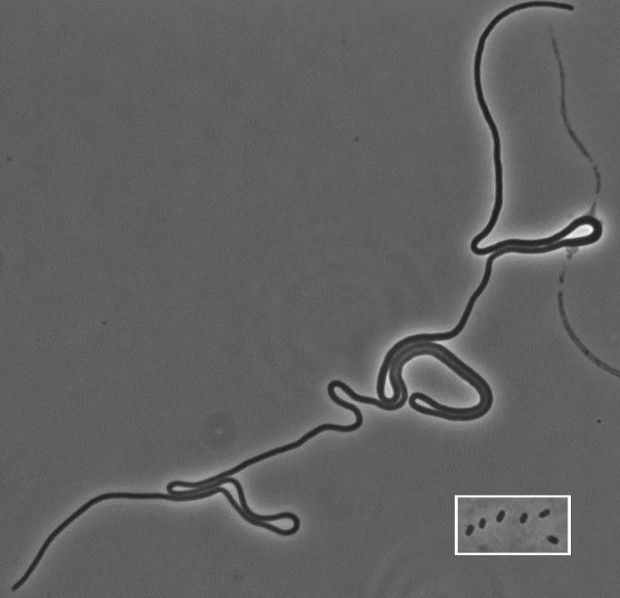In a recent paper, brainiacs with Canada's Concordia University detail how, simply by toying with their physiology, they managed to grow E. coli bacteria about 750 times bigger than what is considered normal.
The bacteria grown by these scientists, one of which is shown in the image below, measure about three quarters of a millimeter from one end to the other. This length might not sound very impressive, but when compared to that of regular organisms of this kind, it very much is.
Thus, just to put things into perspective, it must be said that E. coli bacteria are usually merely 1-2 thousandths of a millimeter long. By comparison, the ones engineered by the Concordia University specialists are regular Godzillas.
Unlike normal E. coli bacteria, which grow until they double in length and then divide, the lab-made organisms can only get bigger and bigger. Why it is that they cannot divide like their normal siblings do remains a mystery.
“We know that they have reduced levels of a protein called FtsZ, which is almost ubiquitous in bacteria and is essential for their division. Why it is reduced remains uncertain,” said study first author Ziad El-Hajj in an interview for the American Society for Microbiology.
Mind you, the Concordia University scientists behind this fairly peculiar research project did not create the mutant bacteria because they were bored and had nothing better to do with their time.
As detailed in the Journal of Bacteriology, the idea is to use such oversized bacteria to shed new light on how various pathogens work, maybe even turn to them to put together nanoscale structures.

 14 DAY TRIAL //
14 DAY TRIAL // 

